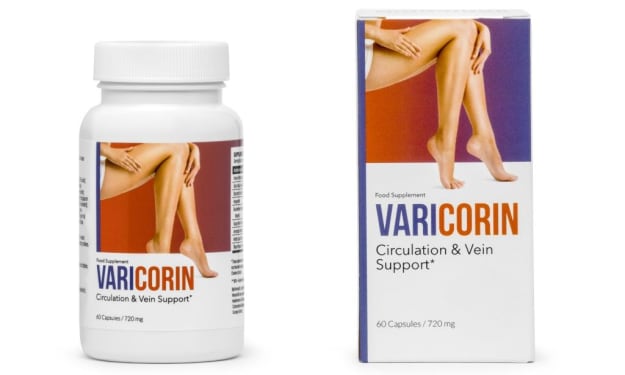Burst Blood Vessels in the Leg: Causes, Treatments, and Prevention
Understanding the Common Causes, Effective Treatments, and Preventive Measures for Burst Blood Vessels in the Leg

Burst blood vessels in the leg, also known as ruptured or broken blood vessels, can occur due to various reasons and often lead to visible signs like bruising or discoloration in the affected area. While it can be a harmless occurrence, understanding the causes and seeking appropriate treatment is essential for overall leg health. In this article, we will explore the common causes of burst blood vessels in the leg and discuss the available treatments to address this condition.
Introduction
Our legs consist of a complex network of blood vessels that transport oxygen and nutrients throughout the body. Sometimes, these blood vessels can rupture or burst, resulting in the leakage of blood into the surrounding tissues. Burst blood vessels in the leg can be caused by different factors, ranging from trauma or injury to underlying health conditions. Identifying the cause and treating it promptly can aid in a speedy recovery and prevent further complications.
Understanding Burst Blood Vessels in the Leg
Burst blood vessels in the leg, also known as ruptured or broken blood vessels, refer to the condition where the small blood vessels near the surface of the skin become damaged and leak blood. These blood vessels, called capillaries, are fragile and can rupture under certain circumstances. When this happens, blood may accumulate under the skin, leading to visible signs such as bruising, discoloration, or the appearance of spider veins.
Common Causes of Burst Blood Vessels
Trauma or Injury
One of the primary causes of burst blood vessels in the leg is trauma or injury. A sudden impact or force to the leg, such as a fall, sports-related injury, or accident, can damage the blood vessels, resulting in their rupture. Even minor injuries like bumps or knocks can cause blood vessels to burst, especially if the skin is already thin or weakened.
Varicose Veins
Varicose veins, enlarged and twisted veins that commonly occur in the legs, can contribute to burst blood vessels. The increased pressure within the varicose veins puts strain on the nearby blood vessels, making them more susceptible to rupture. People with varicose veins may experience recurrent burst blood vessels due to the weakened vessel walls.
Deep Vein Thrombosis (DVT)
Deep vein thrombosis is a condition characterized by the formation of blood clots in the deep veins of the legs. These blood clots can obstruct the flow of blood, causing pressure buildup in the surrounding vessels. If the pressure becomes too high, it can lead to the rupture of blood vessels.
Peripheral Artery Disease (PAD)
Peripheral artery disease is a circulatory disorder that affects the blood vessels outside the heart and brain. It often results from the narrowing or blockage of the arteries due to a buildup of plaque. In some cases, burst blood vessels in the leg can occur as a consequence of the compromised blood flow caused by PAD.
High Blood Pressure
Uncontrolled high blood pressure can exert excessive force on the blood vessel walls, making them more prone to bursting. When blood pressure rises to abnormally high levels, it can weaken the blood vessels over time and increase the risk of ruptures.
Medications and Blood Thinners
Certain medications and blood thinners, such as anticoagulants, can interfere with the blood's ability to clot effectively. While these medications are prescribed for various health conditions, they can make blood vessels more fragile and increase the likelihood of bursting.
Hormonal Changes
Hormonal changes, such as those occurring during pregnancy or menopause, can also contribute to burst blood vessels in the leg. The hormonal fluctuations and increased blood volume during pregnancy can put additional stress on the blood vessels, making them more susceptible to ruptures.
Symptoms and Signs of Burst Blood Vessels
When a blood vessel in the leg bursts, several symptoms and signs may indicate its occurrence. Recognizing these signs can help identify burst blood vessels and differentiate them from other conditions.
Visible Blood Vessels
One of the primary indications of burst blood vessels in the leg is the appearance of visible blood vessels near the skin's surface. These can manifest as red or purplish lines or a network of spider veins in the affected area.
Bruising or Discoloration
Burst blood vessels often lead to bruising or discoloration of the skin. The affected area may turn purple, blue, or black, resembling a bruise. The discoloration is a result of blood leaking into the surrounding tissues.
Swelling and Pain
In some cases, burst blood vessels may cause localized swelling and pain. The accumulation of blood can create pressure and discomfort in the affected area, especially when walking or applying pressure to the leg.
Warmth or Heat in the Affected Area
Burst blood vessels can sometimes cause warmth or heat in the affected leg. This sensation is a result of increased blood flow to the area and may be accompanied by redness.
Diagnosis of Burst Blood Vessels
To diagnose burst blood vessels in the leg, healthcare professionals may perform the following:
Physical Examination
A physical examination of the affected leg helps assess the extent of the burst blood vessels, identify any associated symptoms, and rule out other potential causes. The doctor may examine the skin, check for bruising or discoloration, and assess the overall leg health.
Medical History
Taking a detailed medical history can provide valuable insights into the possible causes of burst blood vessels. The doctor may inquire about recent injuries, existing health conditions, medications, and any family history of similar issues.
Diagnostic Tests
In certain cases, additional diagnostic tests may be conducted to evaluate the condition further. These tests can include ultrasound imaging, which helps visualize the blood vessels and assess their integrity, or blood tests to check for any underlying medical conditions that may contribute to burst blood vessels.
📢 Take a moment to read our informative article on Varicorin Varicose Veins Supplement Review! Discover how this supplement can potentially help with varicose veins. Click here to access the article and make an informed decision about managing your condition: Don't miss out on this valuable resource! 📚💪
Treating Burst Blood Vessels
The treatment for burst blood vessels in the leg depends on the underlying cause and the severity of the condition. Here are some common treatment options:
Rest and Elevation
Resting the leg and keeping it elevated can help reduce swelling and alleviate discomfort. Elevating the leg above the heart level promotes better blood flow and aids in the reabsorption of the leaked blood.
Applying Cold Compresses
Applying cold compresses or ice packs to the affected area can help reduce swelling and inflammation. Cold therapy can constrict the blood vessels and minimize further leakage.
Compression Therapy
Compression therapy involves wearing compression stockings or bandages on the affected leg. These garments apply gentle pressure, helping to support the blood vessels, reduce swelling, and promote proper circulation.
Medications and Supplements
In some cases, over-the-counter pain relievers like acetaminophen or nonsteroidal anti-inflammatory drugs (NSAIDs) may be recommended to manage any pain or discomfort associated with burst blood vessels. Additionally, supplements like horse chestnut extract or diosmin may be prescribed to support vascular health.
Sclerotherapy
Sclerotherapy is a non-surgical treatment option primarily used for spider veins and smaller varicose veins. In this procedure, a solution is injected into the affected veins, causing them to scar and eventually fade away.
Laser Treatment
Laser treatment, or laser therapy, utilizes targeted laser energy to heat and destroy the damaged blood vessels. This treatment is often used for spider veins and can be effective in improving their appearance.
Surgical Procedures
In rare cases where the burst blood vessels are severe or recurrent, surgical procedures may be considered. These can involve the removal or ligation of the affected blood vessels to prevent further rupture and promote better blood flow.
Prevention of Burst Blood Vessels
While not all causes of burst blood vessels can be prevented, adopting certain lifestyle measures can help minimize the risk. Here are some preventive strategies:
Regular Exercise
Engaging in regular physical activity, particularly exercises that promote leg strength and circulation, can enhance overall vascular health. Activities such as walking, swimming, and cycling can help maintain healthy blood vessel integrity.
Healthy Diet and Weight Management
Following a nutritious diet rich in fruits, vegetables, and whole grains supports cardiovascular health. Maintaining a healthy weight can reduce the strain on the blood vessels and lower the risk of burst blood vessels.
Avoiding Prolonged Sitting or Standing
Prolonged sitting or standing can lead to poor blood circulation in the legs, increasing the risk of burst blood vessels. Taking breaks, stretching, and incorporating movement throughout the day can help improve circulation and reduce pressure on the blood vessels.
Wearing Compression Stockings
Using compression stockings can provide gentle pressure to the legs, supporting the blood vessels and preventing blood pooling. These stockings are particularly beneficial for individuals with varicose veins or a history of burst blood vessels.
Protecting Legs from Trauma
Taking precautions to avoid leg injuries and trauma is essential in preventing burst blood vessels. Wearing protective gear during physical activities and being mindful of potential hazards can significantly reduce the risk.
When to Seek Medical Attention
While burst blood vessels in the leg often resolve on their own, it is advisable to seek medical attention if:
- The burst blood vessels are severe, recurrent, or accompanied by intense pain.
- There is a sudden onset of burst blood vessels without any apparent cause.
- The affected leg becomes significantly swollen or shows signs of infection.
- The burst blood vessels do not improve or worsen over time.
Medical professionals can provide a thorough evaluation, diagnose any underlying conditions, and recommend appropriate treatment options.
Conclusion
Burst blood vessels in the leg can occur due to various causes, including trauma, varicose veins, underlying medical conditions, or high blood pressure. While they are often harmless, understanding the underlying causes and seeking appropriate treatment is crucial for managing symptoms, preventing complications, and promoting leg health. By adopting preventive measures, seeking medical advice when necessary, and exploring suitable treatment options, individuals can effectively address burst blood vessels and maintain overall vascular well-being.
FAQs
Q: Can burst blood vessels in the leg be dangerous?
A: Burst blood vessels in the leg are generally not dangerous. However, if they occur frequently, are accompanied by severe pain or swelling, or if there is an underlying medical condition, it is advisable to seek medical attention.
Q: Are burst blood vessels in the leg a sign of an underlying condition?
A: Burst blood vessels in the leg can be a symptom of an underlying condition, such as varicose veins, deep vein thrombosis, or peripheral artery disease. It is recommended to consult a healthcare professional to determine the cause and receive appropriate treatment.
Q: How long does it take for burst blood vessels in the leg to heal?
A: The healing time for burst blood vessels in the leg can vary depending on the severity and individual factors. In most cases, they resolve within a few weeks as the leaked blood is reabsorbed by the body.
Q: Can burst blood vessels in the leg recur?
A: Yes, burst blood vessels in the leg can recur, especially if the underlying cause, such as varicose veins or high blood pressure, is not addressed. Treating the underlying condition and adopting preventive measures can help minimize the risk of recurrence.
Q: Is burst blood vessels in the leg a common problem?
A: Burst blood vessels in the leg are relatively common and can happen to anyone. While they are often harmless and resolve on their own, seeking medical advice is advisable to rule out any underlying conditions and ensure proper management.
📢 Take a moment to read our informative article on Varicorin Varicose Veins Supplement Review! Discover how this supplement can potentially help with varicose veins. Click here to access the article and make an informed decision about managing your condition: Don't miss out on this valuable resource! 📚💪
About the Creator
Jack Brel
At Vocal Media, I am excited to be a part of a platform that values creativity and original content. I am confident that my skills and experience will enable me to create impactful campaigns and bring value to the Vocal Media community
Enjoyed the story? Support the Creator.
Subscribe for free to receive all their stories in your feed. You could also pledge your support or give them a one-off tip, letting them know you appreciate their work.






Comments
There are no comments for this story
Be the first to respond and start the conversation.